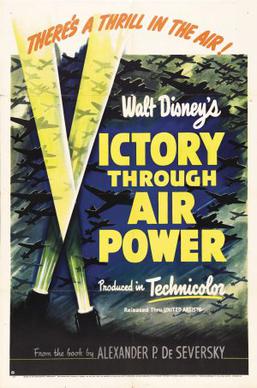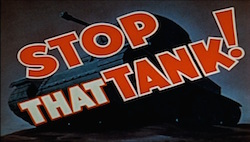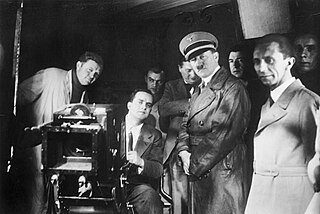
Der Fuehrer's Face is an American animated anti-Nazi propaganda short film produced by Walt Disney Productions, created in 1942 and released on January 1, 1943 by RKO Radio Pictures. The cartoon, which features Donald Duck in a nightmare setting working at a factory in Nazi Germany, was made in an effort to sell war bonds and is an example of American propaganda during World War II. The film was directed by Jack Kinney and written by Joe Grant and Dick Huemer. Spike Jones released a version of Oliver Wallace's theme for the short before the film was released.
Hans Fischerkoesen, also known as Hans Fischerkösen or Hans Fischer was a German commercial animator. Fischerkoesen is considered an animation pioneer, due to the inventions and innovations he applied to animation technology, especially the use of three-dimensional elements in his animations. Later he becomes Germany's most influential cartoonist, often nicknamed “Germany’s Walt Disney” alongside Rolf Kauka. He won both first and second prizes at a Dutch-sponsored international competition in 1937, for advertising films. By 1956 he had won major prizes at commercial film festivals in Rome, Milan, Venice, Monte Carlo and Cannes. Most notable was the participation in the 1st Berlin International Film Festival, where Fischerkoesen's film Blick ins Paradies won the Bronze Medal award.

Victory gardens, also called war gardens or food gardens for defense, were vegetable, fruit, and herb gardens planted at private residences and public parks in the United States, United Kingdom, Canada, Australia and Germany during World War I and World War II. In wartime, governments encouraged people to plant victory gardens not only to supplement their rations but also to boost morale. They were used along with rationing stamps and cards to reduce pressure on the food supply. Besides indirectly aiding the war effort, these gardens were also considered a civil "morale booster" in that gardeners could feel empowered by their contribution of labor and rewarded by the produce grown. This made victory gardens a part of daily life on the home front.

The term "home front" covers the activities of the civilians in a nation at war. World War II was a total war; homeland military production became vital to both the Allied and Axis powers. Life on the home front during World War II was a significant part of the war effort for all participants and had a major impact on the outcome of the war. Governments became involved with new issues such as rationing, manpower allocation, home defense, evacuation in the face of air raids, and response to occupation by an enemy power. The morale and psychology of the people responded to leadership and propaganda. Typically women were mobilized to an unprecedented degree.

The United States home front during World War II supported the war effort in many ways, including a wide range of volunteer efforts and submitting to government-managed rationing and price controls. There was a general feeling of agreement that the sacrifices were for the national good during the war.

During American involvement in World War II (1941–45), propaganda was used to increase support for the war and commitment to an Allied victory. Using a vast array of media, propagandists instigated hatred for the enemy and support for America's allies, urged greater public effort for war production and victory gardens, persuaded people to save some of their material so that more material could be used for the war effort, and sold war bonds.

Britain re-created the World War I Ministry of Information for the duration of World War II to generate propaganda to influence the population towards support for the war effort. A wide range of media was employed aimed at local and overseas audiences. Traditional forms such as newspapers and posters were joined by new media including cinema (film), newsreels and radio. A wide range of themes were addressed, fostering hostility to the enemy, support for allies, and specific pro war projects such as conserving metal and growing vegetables.
Between 1941 and 1945, during World War II, Walt Disney and his company were involved in the production of anti-Nazi propaganda films for the U.S. government. The widespread familiarity of Disney's productions benefited the U.S. government in producing pro-American war propaganda in an effort to increase support for the war.

Victory Through Air Power is an American animated documentary propaganda film produced by Walt Disney Productions and released by United Artists on July 17, 1943. It is based on the 1942 book Victory Through Air Power by Alexander P. de Seversky. De Seversky appeared in the film, an unusual departure from the Disney animated feature films of the time.
World War II changed the possibilities for animation. Prior to the war, animation was mostly seen as a form of family entertainment. The attack on Pearl Harbor was a turning point in its utility. On December 8, 1941, the United States Army began working with Walt Disney at his studio, stationing Military personnel there for the duration of the war. The Army and Disney set about making various types of films for several different audiences. Most films meant for the public included some type of propaganda, while films for the troops included training and education about a given topic.
Anzacs in Overalls is a 1941 Australian documentary film directed by Ken G. Hall.

Propaganda is a form of communication that aims to shape people's beliefs, actions and behaviours. It is generally not impartial, and is hence viewed as a means of persuasion. It is often biased, misleading, or even false to promote a specific agenda or perspective. Propagandists use various techniques to manipulate people's opinions, including selective presentation of facts, the omission of relevant information, and the use of emotionally charged language. Propaganda has been widely used throughout history for largely financial, military as well as political purposes, with mixed outcomes.

Stop That Tank! is a 22-minute 1942 instructional film created during World War II by Walt Disney Productions for the Directorate of Military Training, The Department of National Defence and the National Film Board of Canada (NFB). Its purpose, akin to "edutainment", was to instruct Canadian soldiers in the handling and care of the Boys Mk.1 Anti-tank rifle for use in combat against Nazi tanks. The film presented information in an entertaining manner as well as providing an anti-Nazi propaganda message.

The Deutsche Zeichentrickfilme GmbH (DZF) was an animation production company founded on 25 June 1941 by Reich propaganda minister Joseph Goebbels. It was set up as an alternative to Disney, attempting to rival films such as Mickey Mouse, while spreading the Nazi ideology and propaganda through a less aggressive entertainment source.

The Thrifty Pig is a four-minute educational short animated film made by Walt Disney Studios for the National Film Board of Canada. A World War II propaganda film, it was released theatrically on November 19, 1941, as part of a series of four films directed at the Canadian public to learn about war bonds. The Thrifty Pig was directed by Ford Beebe. It is also a remake of the 1933 film of the same name.

Food - Weapon of Conquest is a 22-minute 1941 Canadian documentary film, made by the National Film Board of Canada (NFB) as part of the wartime Canada Carries On series. The film was written, directed and produced by Stuart Legg. Food - Weapon of Conquest shows the food shortage in Nazi-occupied countries in the Second World War, contrasted with the Allied response to the global food crisis. The film's French version title is Une armée marche sur son estomac.

Tomorrow's World is a 20-minute 1943 Canadian documentary film, made by the National Film Board of Canada (NFB) as part of the wartime Canada Carries On series. The film, produced by Raymond Spottiswoode, described the importance of conservation and rationing during the Second World War, and how the world would be more prosperous and better planned because of the war efforts. The French version of Tomorrow's World is titled Le Monde de demain.

The Battle of the Harvests is an 18-minute 1942 Canadian documentary film, made by the National Film Board of Canada (NFB) as part of the wartime Canada Carries On series. The film was produced by James Beveridge and directed by Stanley Jackson, who also provided the narration. The Battle of the Harvests shows how the farmers were mobilized worldwide in a battle on the farmland to serve the fighting nations during the Second World War. The film's French version title was La Bataille des récoltes.

The United Kingdom home front during World War II covers the political, social and economic history during 1939–1945.

Propaganda in World War II had the goals of influencing morale, indoctrinating soldiers and military personnel, and influencing civilians of enemy countries.















